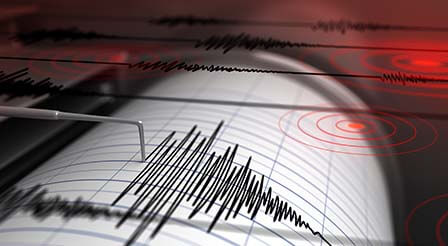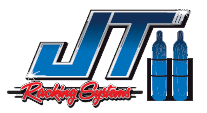 Health and medical facilities can suffer severe damage from natural disasters, particularly earthquakes. While the scope and scale of facility damage in an earthquake is difficult to predict or manage, there are certain things you can do to increase the earthquake readiness of your medical facility.
Health and medical facilities can suffer severe damage from natural disasters, particularly earthquakes. While the scope and scale of facility damage in an earthquake is difficult to predict or manage, there are certain things you can do to increase the earthquake readiness of your medical facility.
Following are 4 things to consider when preparing your medical facility for an earthquake:
1. Identify Falling/Toppling Hazards and Secure Them
It is recommended that you conduct a walkthrough of your medical facility to identify furniture, heavy piece of equipment, and objects that are vulnerable to toppling over, sliding, falling, or colliding with other items.
Once you have identified such hazards, follow these tips to secure them:
• Make sure that heavy, large items are away from exit routes and doorways.
• Install restraining straps and anchor bolts on heavy pieces of equipment, objects, carts, furniture, etc.
• Install wall restraints on taller items such as photocopiers, medical records, freezers, refrigerators, shelf-mounted equipment, filing cabinets, bookcases, furniture, etc.
• Install restraints such as flexible nylon buckles and straps on mounted tabletop or desktop equipment (televisions in waiting areas, computers, etc.).
• Install latches on cupboard and cabinet doors and other storage areas. Lock storage and cabinets when not in use.
• Store any flammable and/or hazardous materials and heavy items on lower shelves.
• Store educational materials and forms in upright holders to prevent them from falling.
• Secure smaller items such as countertop or desktop items using microcrystalline wax, gel, or earthquake putty.
2. Identify Utility Risks
Conduct a walkthrough of your entire medical facility to identify vulnerable electrical, water, and gas lines. For instance, damage to non-structural walls could cause a power outage due to rupturing the water lines. Map and label all utility shutoff locations and make sure that the appropriate employees know the location of all utilities as well as how to turn them off.
3. Ensure Source of Emergency Power
Purchasing sources of emergency power is a must. These may include sufficient number of portable generators that can sustain critical operations and provide light, portable emergency lighting such as flashlights, battery-operated emergency lighting, etc. It is recommended that you keep fire extinguishers and flashlights in easily accessible areas.
4. Use Seismic-Rated Gas Cylinder Racks
It is highly recommended that you use seismic-related gas cylinder racks for securing both outdoor and indoor bulk cylinder storage. These gas cylinder racks are thick in diameter and are designed to be used as safety restraining racks to properly secure various types of medical gas cylinders. There are a wide variety of such racks available on the market. You can choose from various sizes, small to large. Furthermore, the seismic-rated gas cylinder racks range from single tank racks to multiple bulk storage options with additional security layers. You can use them in your medical facility to increase your compressed gas cylinders’ earthquake readiness and security. It is recommended that you purchase racks that meet OSHA, CGA, NFPA, UFC, and Seismic Zone requirements.
JT Racking Systems is dedicated to supplying our customers with the highest quality Cylinder Storage Racks available. Our Cylinder Storage Racks are fully made in America with US Steel and Chain, and are Welded and Powder Coated at our facility in Southern California. Regularly used in hospitals, universities, or laboratory gas storage rooms, our cylinder racks can be utilized wherever securing of cylinders is needed. We ship anywhere in the United States from our Los Angeles area facility, at the best prices on the market since you are buying direct from the manufacturer.
